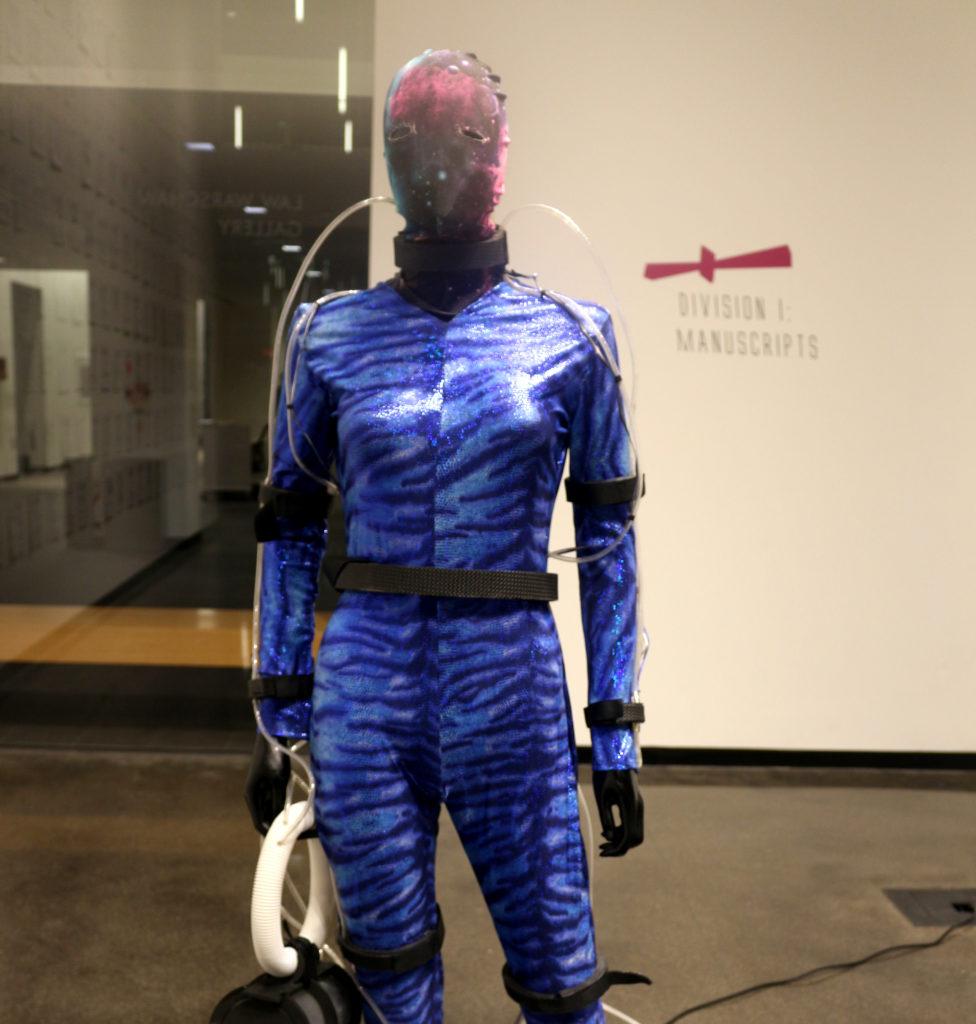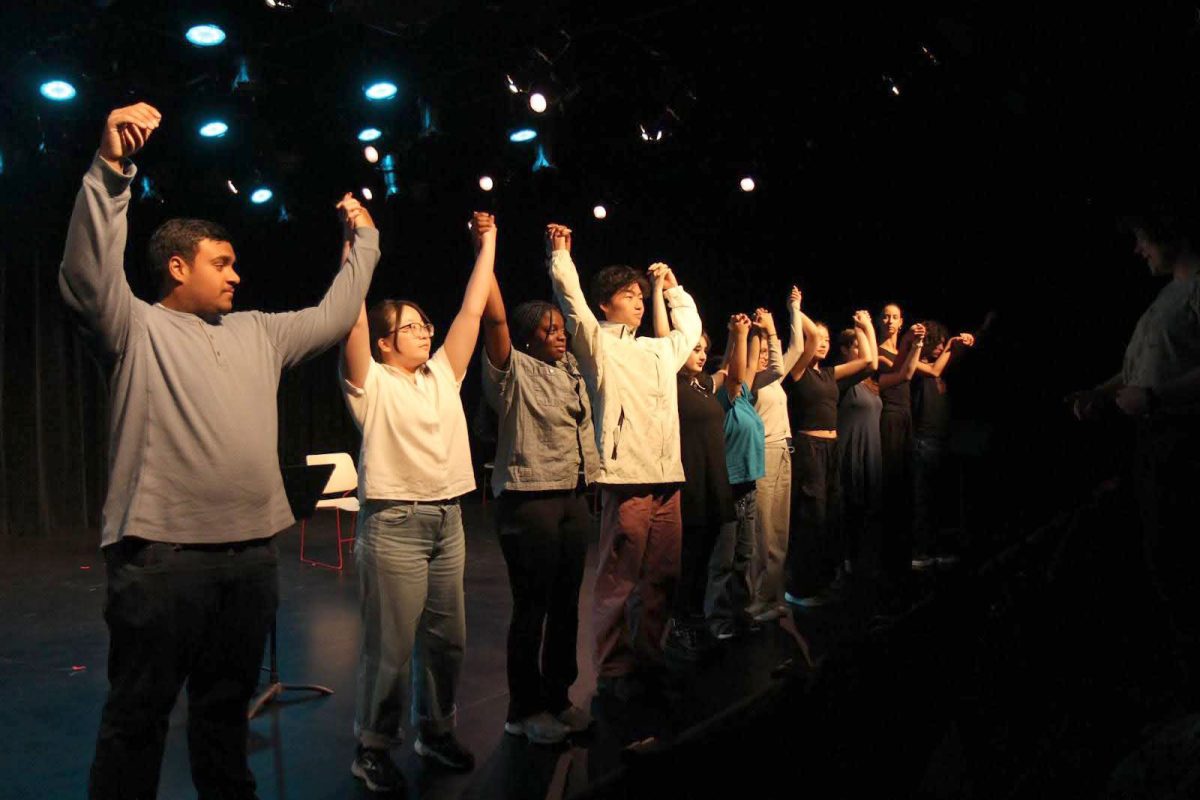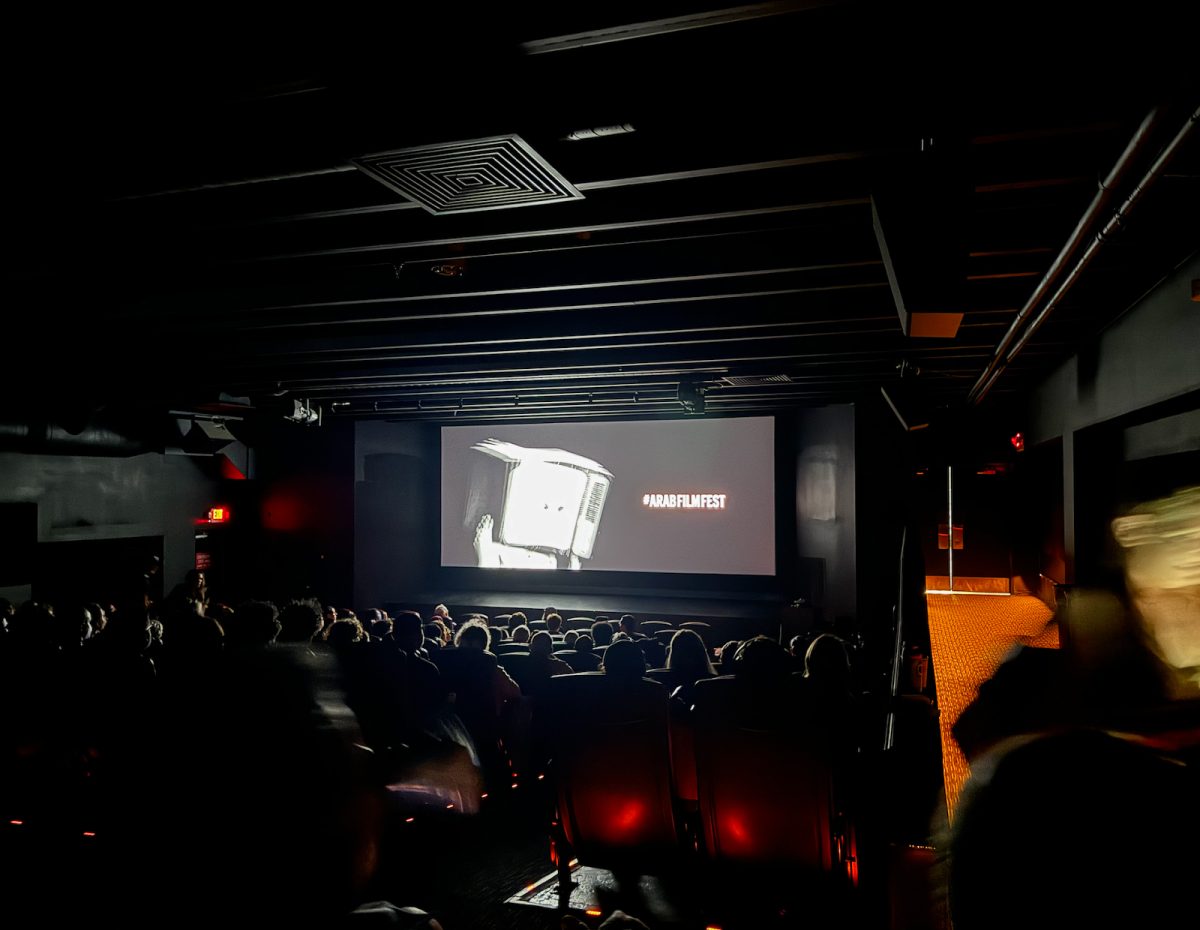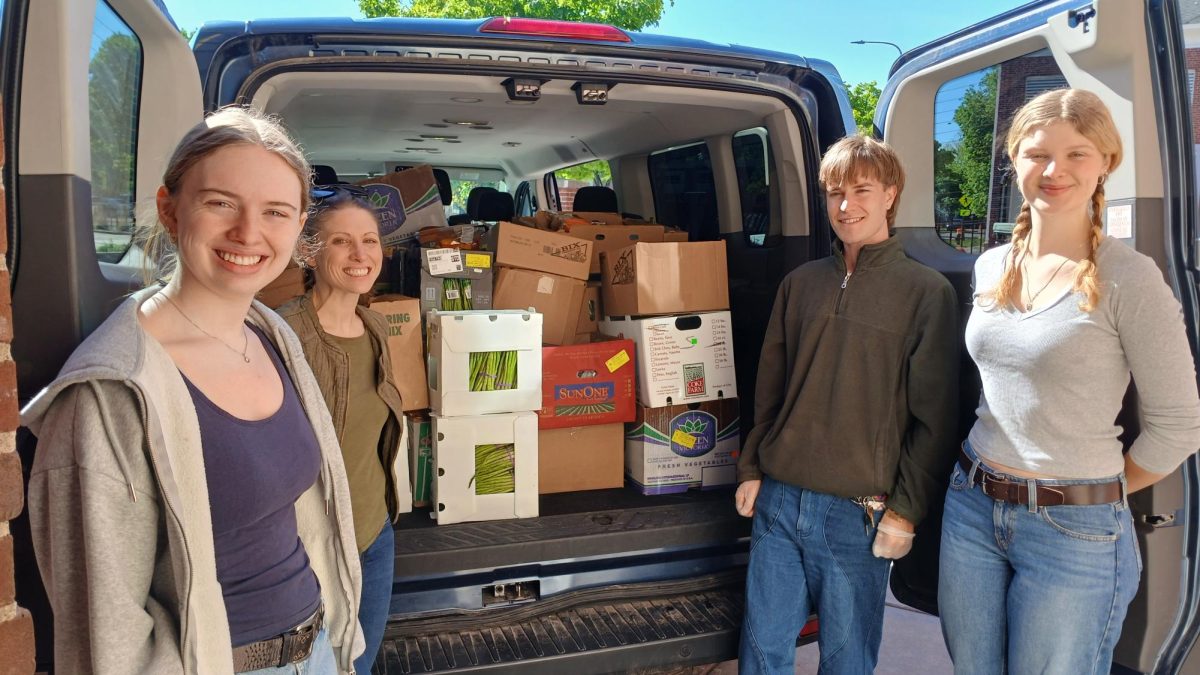 Created by artists Salome Asega and Ayodamola Okunseinde, the Iyapo Repository is a collection of art pieces meant to affirm and explore the experiences of people of African descent. The repository imagines a future in which representation is forward-thinking, innovative and inclusive. That future is collaborative by nature. Thus, the gallery itself is collaborative, drawing from community workshops led by the artists. The Iyapo Repository (“Macalester Lab” edition) opened on September 22, and will be on display in Macalester’s Law Warschaw Gallery until October 25.
Created by artists Salome Asega and Ayodamola Okunseinde, the Iyapo Repository is a collection of art pieces meant to affirm and explore the experiences of people of African descent. The repository imagines a future in which representation is forward-thinking, innovative and inclusive. That future is collaborative by nature. Thus, the gallery itself is collaborative, drawing from community workshops led by the artists. The Iyapo Repository (“Macalester Lab” edition) opened on September 22, and will be on display in Macalester’s Law Warschaw Gallery until October 25.
Since its beginning in 2015, the repository has expanded through the work of its growing number of contributors. Its most recent installation at Macalester is the largest so far. To provide commentary on the gallery’s opening, Macalester held a panel discussion with the gallery’s lead artists, Asega and Okunseinde. They spoke alongside Mariama Jalloh, one of their project assistants, as well as Macalester faculty members Crystal Moten (Assistant Professor of African American History) and Leola Johnson (Professor of Media and Cultural Studies).
In the panel discussion, Okunseinde and Asega described their reasons for creating the gallery. According to the catalog accompanying the gallery, the artists aimed to “affirm and project the future of people of African descent.” Okunseinde echoed this sentiment, explaining that the gallery encourages people of color to “generate ideas about what they envision” in their futures. In doing so, the gallery asserts that people of color should be the ones deciding how they are represented in history books, and no one else. By defining how they want to be represented through art and technology, those communities are given the agency to create their own futures.
The term “repository” in the title is highly significant, as it references how the gallery plays with concepts of time. The Iyapo Repository holds “artifacts” that a future society has kept to remember its past. In the panel discussion, Moten voiced a central question posed by the gallery: “How do we create an archive that represents the kind of future we want?”
The repository is broken up into four divisions: Art and Artifacts, Manuscripts, Moving Images, and Rare Media. Each division operates on its own, but their subject material overlaps. “The objects speak to each other,” Okuseinde said, reflecting on how “technology and stories and narratives” all operate in the same vein: creating “the individual.” The Manuscripts division, which spans an entire wall of the gallery, includes the blueprints for many of the artifacts. These are labeled as “field notes,” which are often whimsical and, more often than not, strikingly witty. The manuscript collection was created by community members in collaboration with Asega and Okunseinde, and the result is a wide range of inventions.
“Field Notes for Artifact 012” describes a suit that “simulates the feeling of being underwater” to help “trauma victims and other people with water-related phobias.” A mock-up design of the “Sensory Suit” is on display in the Art and Artifacts division, life-size and electric blue. In the Moving Images division, the suit is shown in use, with the wearer holding a device that pumps water through plastic tubes wound tight around their body. Manuscripts show other practical inventions such as the “Temporary Tattoo” that “responds to words and actions that are not rooted in fundamental equality,” as well as “Afromation Pills,” which “transmit information on historical topics via the brain” (black history lessons learned in an instant). The repository also features digital designs of these objects.
 The Rare Media division reflects further upon black history, engaging with black art and literature of the past. By including this division, the artists acknowledge their position within a broader narrative. This includes “Black Soul Rejuvenation Library,” a digital project by Kesem Kydd, and the Xenogenesis Trilogy, written by celebrated African American author Octavia Butler. The title Iyapo Repository is in reference to the main character of Butler’s science fiction series, Lilith Iyapo. Okuseinde and Asega have long shared a fascination with the genre, and Okuseinde explains that they “understand science fiction as the fears of the present.” Like good science fiction, the repository holds a mirror to our current society by presenting a brand new one.
The Rare Media division reflects further upon black history, engaging with black art and literature of the past. By including this division, the artists acknowledge their position within a broader narrative. This includes “Black Soul Rejuvenation Library,” a digital project by Kesem Kydd, and the Xenogenesis Trilogy, written by celebrated African American author Octavia Butler. The title Iyapo Repository is in reference to the main character of Butler’s science fiction series, Lilith Iyapo. Okuseinde and Asega have long shared a fascination with the genre, and Okuseinde explains that they “understand science fiction as the fears of the present.” Like good science fiction, the repository holds a mirror to our current society by presenting a brand new one.
According to the catalogue accompanying the gallery, these artifacts are meant to celebrate a long history of “design thinking and the tactics of black American organizations in the mid-20th century.” They acknowledge that black people throughout history have an “established legacy of creating self-determined futures.” In this way, the gallery recognizes its place in history, and celebrates all forward-thinking movements represented in black culture.
Like the futures represented in these artifacts, the future of the repository is contingent, and full of possibilities. It will continue to travel following its time at Macalester, and the collection of artifacts will expand as more community members contribute their ideas.
The gallery’s job is not to create distinct solutions to society’s problems. Rather, it creates an inclusive space in which those problems can be discussed. By imagining how we will one day think of our pasts, the Iyapo Repository invites us to imagine our futures.













Trevor Rampling • Sep 11, 2019 at 3:39 am
I’d also like to express that most people who find themselves without having health insurance are typically students, self-employed and those that are not working. More than half of the uninsured are under the age of 35. They do not really feel they are wanting health insurance since they’re young and also healthy. Its income is usually spent on housing, food, along with entertainment. Many people that do represent the working class either 100 or part time are not supplied insurance by way of their jobs so they go without with the rising expense of health insurance in the states. Thanks for the strategies you talk about through this website.
Nicola Arnold • Sep 8, 2019 at 11:01 pm
I will right away grab your rss feed as I can’t find your e-mail subscription link or e-newsletter service. Do you have any? Kindly let me know in order that I could subscribe. Thanks.